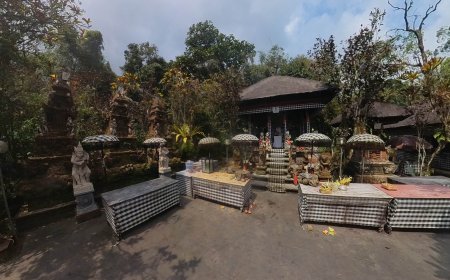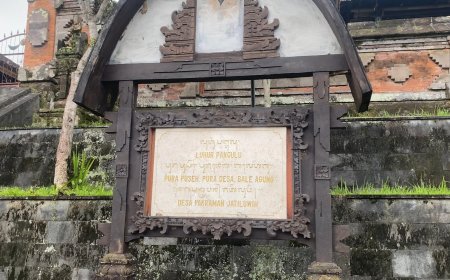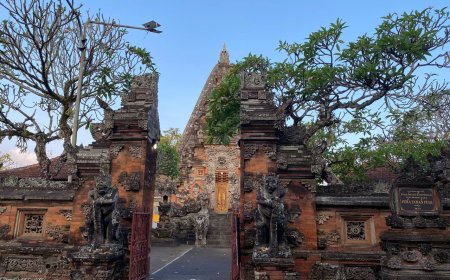Watu Klotok Temple, The Hidden Spiritual Paradise at the Tip of Bali
Watu Klotok Temple is one of the sacred sites that radiates charm and history on the island of Bali, Indonesia. Gracefully situated on the coast, south of the town of Klungkung, this temple is not only a significant place of worship for Balinese Hindus but also serves as a captivating window to the past.
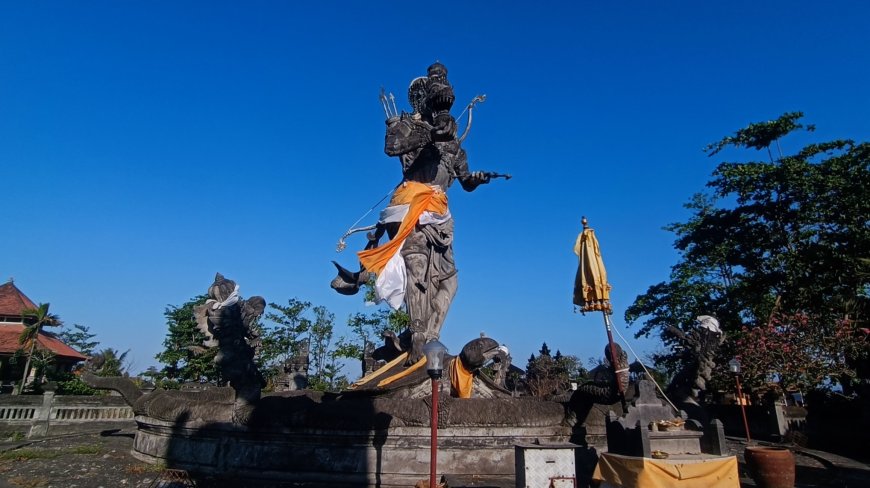
Bali is indeed known for its thousands of temples, from Kahyangan to Dang Kahyangan Jagat, and even the Kahyangan Tiga temples found in every Pakraman village and family shrines in homes. It's no wonder that this island is often referred to as the "Island of a Thousand Temples" or, as we commonly hear, the "Island of the Gods."
One of the fascinating destinations to explore is the Kahyangan Jagat Watu Klotok Temple located in Klungkung. This temple serves as a primary destination for Hindu devotees seeking a spiritual experience. Situated on the southern coast of Klungkung town, Watu Klotok Temple offers the tranquility and serenity greatly sought after by spiritual seekers. In addition to the activities conducted at Watu Klotok Temple, such as Melukat, Nangkid ceremonies, Neduh, and others.
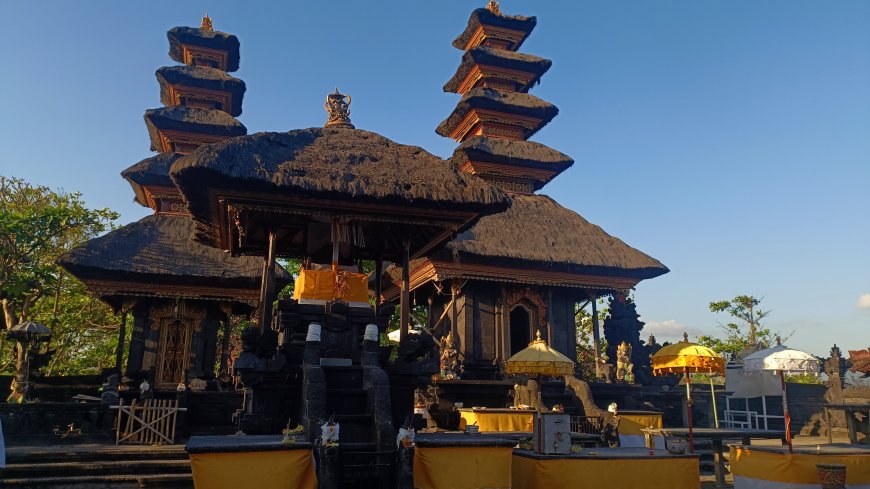
Utama Mandala (Photo Source: Own Collection)
Watu Klotok Temple also plays a significant role in various Hindu religious ceremonies. Every six months, a piodalan ceremony is held, coinciding with Anggara Kasih Julungwangi. Additionally, regular events are organized each year during Purnamaning Kalima. Both of these events attract many Hindu devotees who come to worship and experience the sacred atmosphere here. In addition to these celebrations, Watu Klotok Temple also plays a central role in the grand ceremonies held at Besakih Temple, one of the largest temples in Bali. Ceremonies such as Panca Wali Krama, Candi Darmada, Eka Bhuana, Tri Bhuana, and even Eka Dasa Rudra, which is held once every hundred years, all encompass the Watu Klotok beach as part of their rituals.
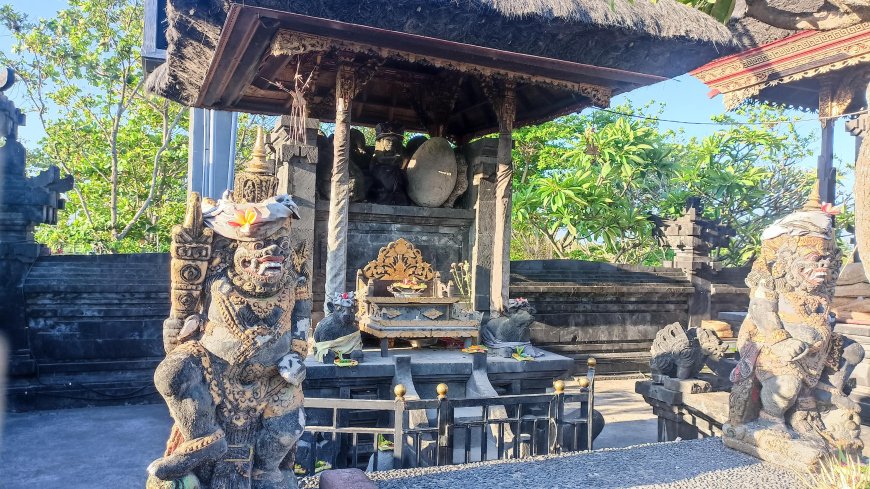
Mekocok Stone (Photo Source: Own Collection)
However, the attraction of Watu Klotok Temple is not solely based on religious aspects. The integral part of this temple, the "mekocok" stone, holds its own history and significance. This stone emits a distinctive sound when shaken, as if signaling the presence of something hidden within it. The existence of this mekocok stone is highly sacred and gives the temple its name, where "watu" means stone and "klotok" means shake. At the main site of Watu Klotok Temple, there is the Pelinggih Ida Bathara Batu Mekocel or Pelinggih Ida Batara Lingsir, believed to possess a high spiritual vibration and used to seek safety, fertility, and well-being for the community.
Watu Klotok Temple is also believed to be the dwelling place of Dewa Baruna, the god of the seas, and it houses several sacred objects (unen-unen) of Ida Bhatara such as lelipi poleng (striped snake), bikul (white rat), and penyu mecolek pamor (spotted turtle). This belief was substantiated a few years ago when a turtle stranded on Watu Klotok beach, considered a favorable omen in accordance with this belief.
"Visitors and local communities who come to Watu Klotok Temple are not only seeking fertility or offspring, some also seek success in their endeavors, long life, and many local residents, including farmers from the surrounding Tojan Village, come to seek fertility related to their harvests and to request assistance in pest control for their rice fields. This has led many people to believe and visit Watu Klotok Temple in search of guidance for the good things they hope for." The words of Mangku Dewa in the interview, Thursday, September 21, 2023.
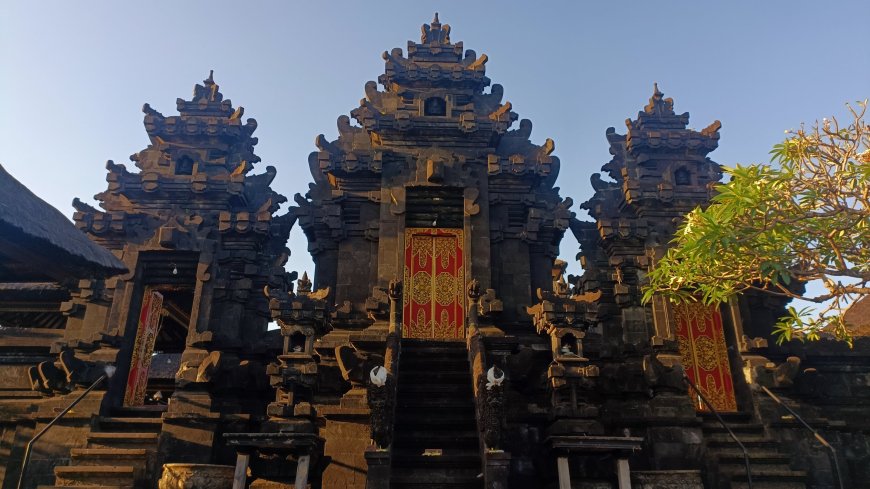
Madya Mandala (Photo Source: Own Collection)
Unlike the current state, the architectural layout of Watu Klotok Temple itself used to be flat, with only one level, where the Utama mandala, Madya mandala, and Nista mandala had no differences in terms of height (all on one level). It underwent renovation in the 2000s, dividing these three areas into specific heights. In the Nista mandala or outer side of Watu Klotok Temple, there are Candi Bentar and Arca Dwapara Pala, complete with mace weapons on their sides, along with six buildings or shrines such as Sanghyang Kala Sunia and Pelinggih Ida Batara Dalem Ped, among others.
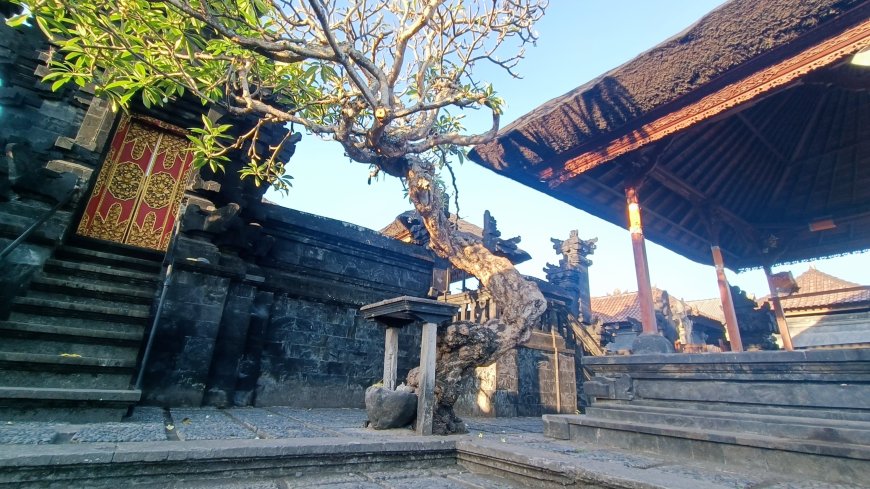
Sacred Shrine of Ratu Gde Penataran Ped Taksu (Photo Source: Own Collection)
Moving on to the Madya mandala section, there is the Pelinggih Sang Kala Sunya, which is crucial for Batara Baruna, who rules the polar regions. Meanwhile, on the eastern side of the Pelinggih Sang Kala Sunya and near the large ketapang tree is a place of worship for Ratu Gde Penataran Ped. There are also monuments like "ngerurah" (a sacred shrine) and five buildings or shrines, including bale pemedek, bale gong, and others in this area. Upon entering the Utama mandala, you will find the Pelinggih Ida Batara Watu Makocok (Makocel) and 16 buildings or shrines in this section, including Padmasana, Meru Tumpang Lima, Candi Bale, and others.
Not only does Watu Klotok Temple offer a profound religious experience, but it also presents captivating natural beauty. Despite having black sand, which is different from the popular white-sand beaches of South Bali, Watu Klotok Beach provides tranquility, privacy, and perfect serenity. The breathtaking views of the Nusa Penida islands in the distance add to the stunning natural charm. This beach also attracts foreign tourists interested in surfing and challenging the waves here.
The long history of Watu Klotok Temple reflects the invaluable cultural and religious richness of Bali. With its significant role in various religious ceremonies and the meaning held within its mekocok stone, Watu Klotok Temple becomes a precious marker in the cultural and spiritual heritage of this island. It is a place that not only enriches Bali's culture but also serves as a magnet for tourists seeking the spiritual and natural beauty of the island. With all its allure, Watu Klotok Temple continues to play a vital role in preserving the cultural and religious diversity of the island, making it one of the most charming and historic sites in Bali, Indonesia.
With its rich history, religious traditions, and captivating natural phenomena, Watu Klotok Temple is one of those places that not only enriches Bali's culture but also attracts tourists who want to delve deeper into the spiritual beauty of the island. Therefore, this place remains a valuable marker in Bali's priceless religious and cultural heritage.
There are many interesting and novel things to discover in the Watu Klotok area, including sacred places, beaches, and vast rice fields, all enveloped in the serenity and tranquility of nature. Many tourists choose this destination for vacations and tours, enjoying the peaceful natural beauty and enhancing their travel experiences in the Klungkung Regency.
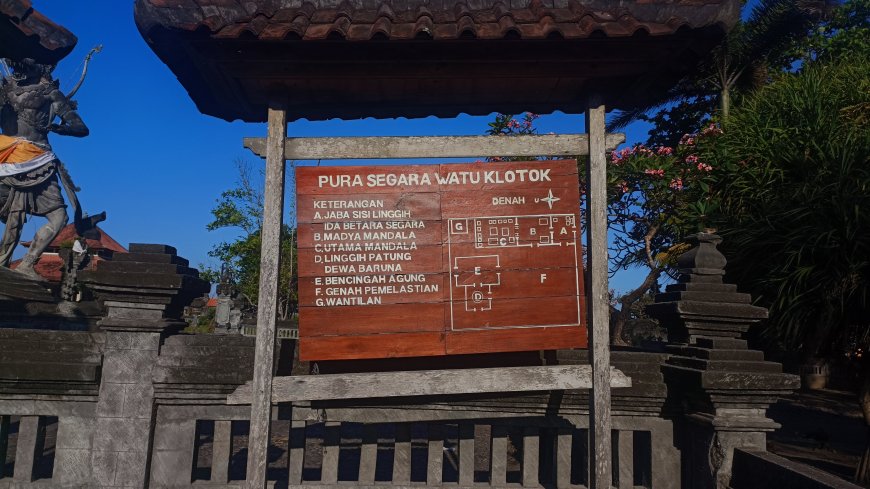
Maps of Watu Klotok Temple (Photo Source: Own Collection)
Watu Klotok Temple is located at an easily memorable address in Banjar Celepik, Tojan Village, Klungkung District, and Klungkung Regency. Besides serving as a place of worship, this temple is also a popular tourist attraction for both local residents and tourists alike. This location is a great place to spend time with family, especially if you're vacationing with children.
To reach Watu Klotok from Denpasar, you can cover a distance of approximately 29 km via the Ida Bagus Mantra bypass road. Additionally, the distance between Goa Lawah Temple is about 9 km, while it's only about 4 km from Dasar Bhuana. After reaching the Tojan village intersection, simply turn right and travel about 1 km to arrive at Watu Klotok Temple, where you will be greeted by the fresh and cool air and captivating views. The scenery combines lush rice fields with the sparkling sea and the enchanting shoreline.

















































